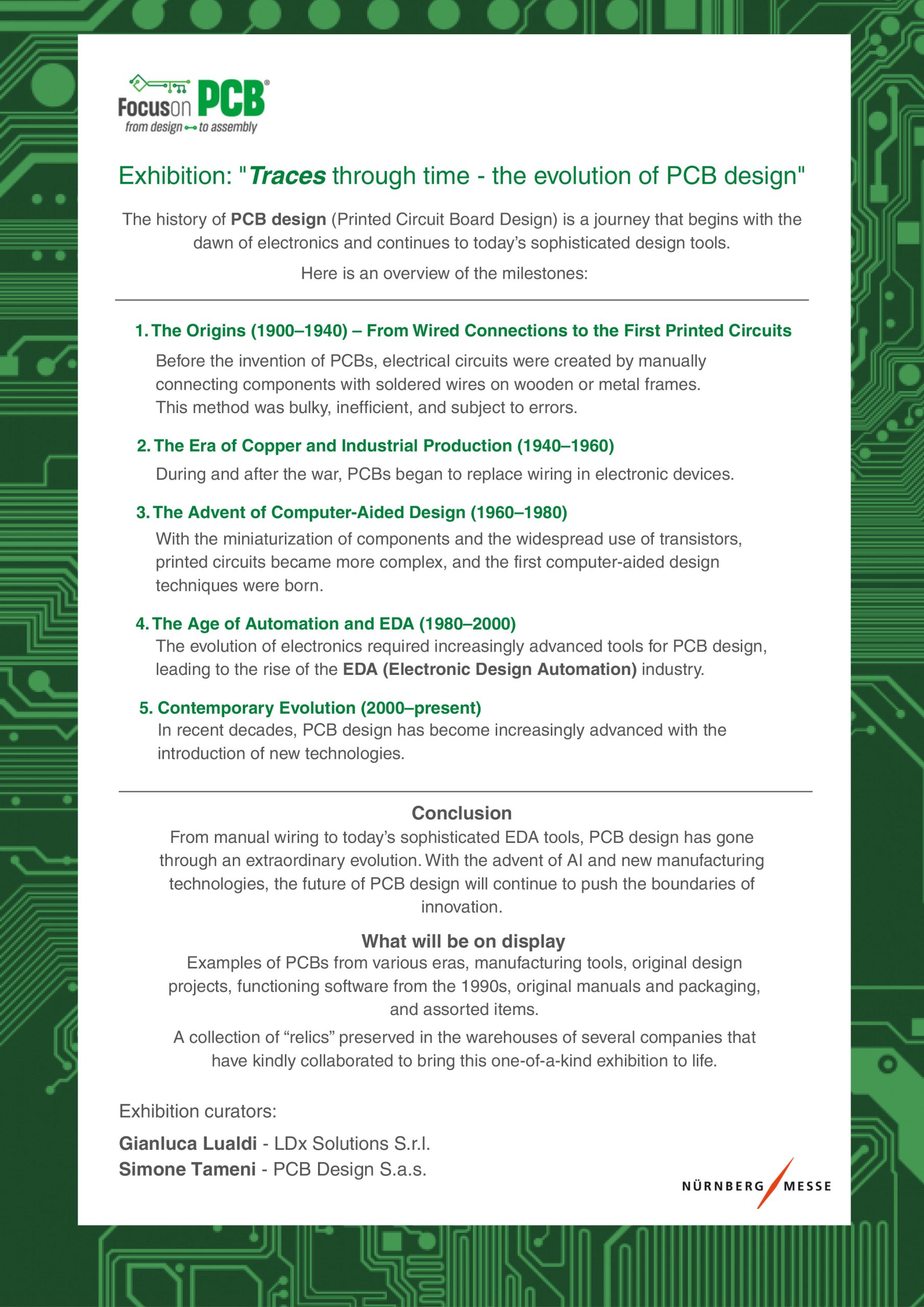
Exhibition: “Traces through time – the evolution of PCB design”
The history of PCB design (Printed Circuit Board Design) is a journey that begins with the dawn of electronics and continues to today’s sophisticated design tools.
Here is an overview of the milestones:
1. The Origins (1900–1940) – From Wired Connections to the First Printed Circuits
Before the invention of PCBs, electrical circuits were created by manually connecting components with soldered wires on wooden or metal frames. This method was bulky, inefficient, and subject to errors.
2. The Era of Copper and Industrial Production (1940–1960)
During and after the war, PCBs began to replace wiring in electronic devices.
3. The Advent of Computer-Aided Design (1960–1980)
With the miniaturization of components and the widespread use of transistors, printed circuits became more complex, and the first computer-aided design techniques were born.
4. The Age of Automation and EDA (1980–2000)
The evolution of electronics required increasingly advanced tools for PCB design, leading to the rise of the EDA (Electronic Design Automation) industry.
5. Contemporary Evolution (2000–present)
NIn recent decades, PCB design has become increasingly advanced with the introduction of new technologies.
Conclusion
From manual wiring to today’s sophisticated EDA tools, PCB design has gone through an extraordinary evolution. With the advent of AI and new manufacturing technologies, the future of PCB design will continue to push the boundaries of innovation.
What will be on display
Examples of PCBs from various eras, manufacturing tools, original design projects, functioning software from the 1990s, original manuals and packaging, and assorted items.
A collection of “relics” preserved in the warehouses of several companies that have kindly collaborated to bring this one-of-a-kind exhibition to life.
Exhibition curators:
Gianluca Lualdi – LDx Solutions S.r.l.
Simone Tameni – PCB Design S.a.s.






